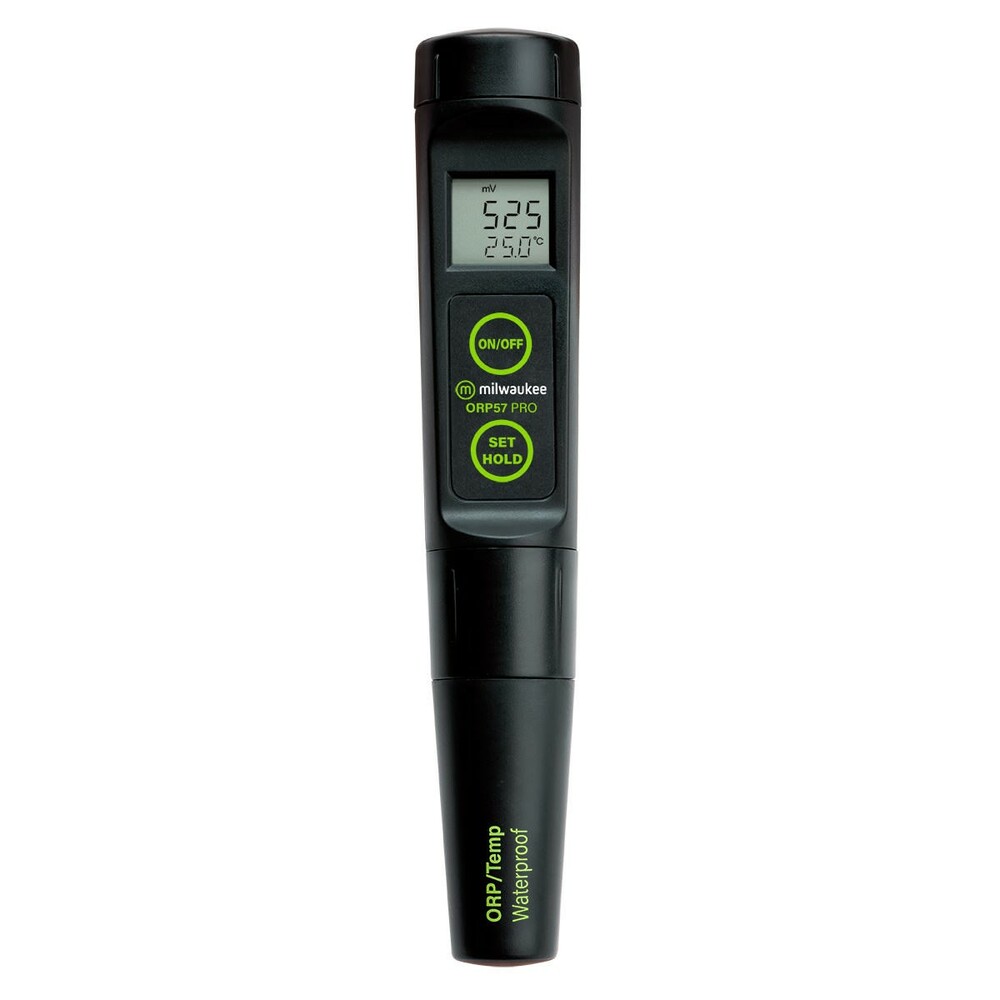The Milwaukee ORP57 PRO ORP/Temp. Tester is designed for laboratory, pools, education, water treament and many other applications. It is the ideal meter to help make sure that your ORP/Temp. needs are being met and are reliable results for your analysis. Keep ORP/TEMP. in your target range to help your achieve best results.
DESIGN FEATURES
- Measures temperature and ORP with automatic temperature compensation (ATC).
- Ideal range for pools and all different applications ( /- 1000 mV| -5.0 to 60°C (23.0 to 140.0°F).
- Units direct in mV.
- Factory calibrated (no need to recalibrate).
- Replaceable electrode Mi57P.
- Fully waterproof to IP65
- Approximately 300 hours of use (4 x 1.5V batteries included)
CARE AND USE
MAINTENANCE
ORP electrodes can develop nutrient build up over time. To miminize build up, always rinse the probe in fresh tap or DI water after every use.
CARE AND USE
ORP meters usually start performing poorly because of problems with the probe. The two parts of the ORP probe that cause problems are the glass sensing bulb and the reference junction.
SENSING BULB
The glass bulb loses sensitivity with use and will eventually fail. This is true of all ORP probes.
REFERENCE JUNCTION
The reference junction is a small hole that allows the meter to compare the sample to a reference. The reading is generated based on the electrical difference between the sample and reference. If the junction hole gets clogged, the ORP electrode will no longer function.
You can extend the life of your ORP electrode in the following ways.
STORAGE
To minimize clogging the ORP probe needs to be kept hydrated. Long periods of dry storage will damage the sensitivity of the probe. Allowing the probe to dry out may also result in the junction hole getting clogged.
Store the ORP probe in storage solution MA9015 this will help address both these issues. Do not store in tap water or DI water. This will damage the sensitivity of the probe.
The best way to store the probe is with the probe’s cap filled with storage solution or calibration buffer and the cap tightened to prevent leakage. It is also recommended that to store the electrode upright to further reduce the potential for leakage.
CLEANING AN MAINTENANCE
Residue from the sample can impact the sensitivity of the sensing bulb and clog the junction. This is especially true if the sample has a lot of organic material. We recommend regularly soaking your electrode in cleaning solution MA9016. Also:
1. Inspect the electotrode for damage or scratches, if present replace the electrode.
2. Inspect the cable. The connection cable and insulation must be intact.
3. Connectors should be clean and dry.
4. Rinse off salt deposits with water or DI water.




